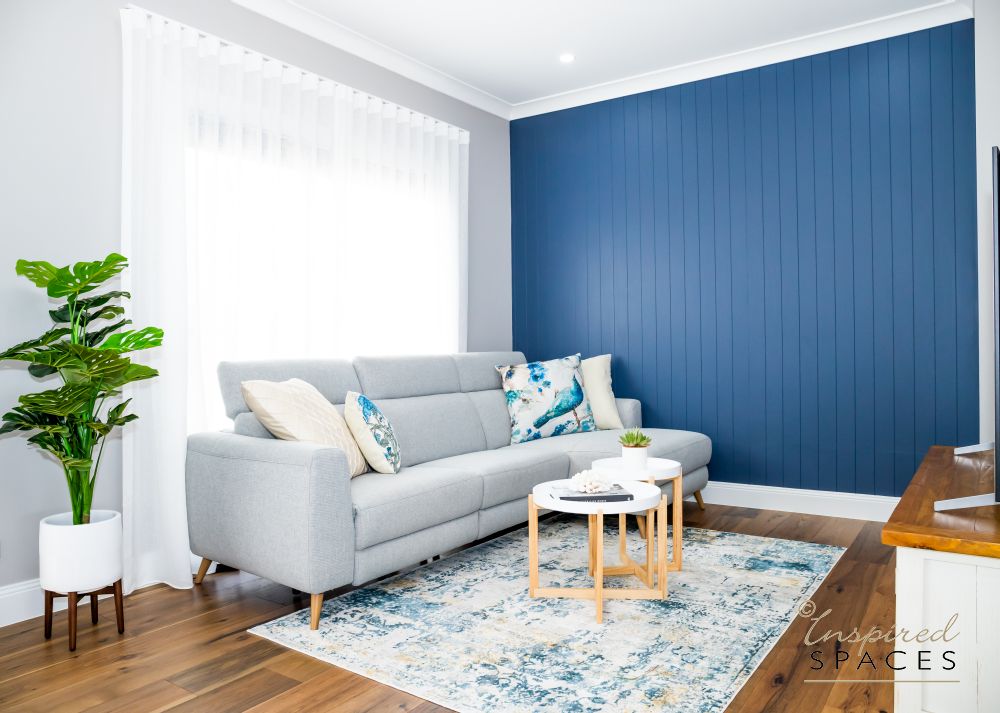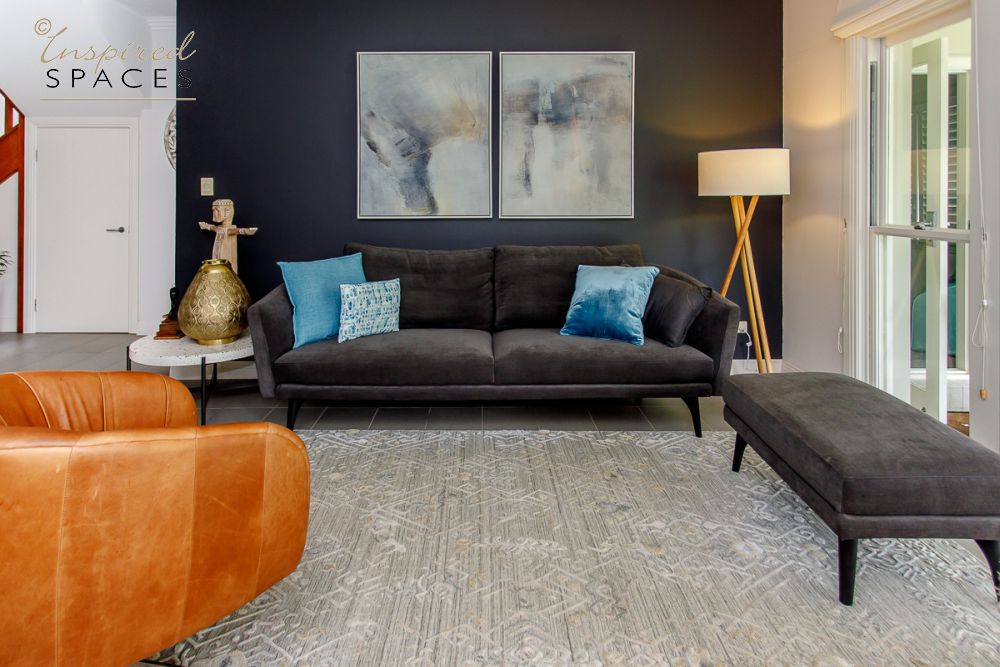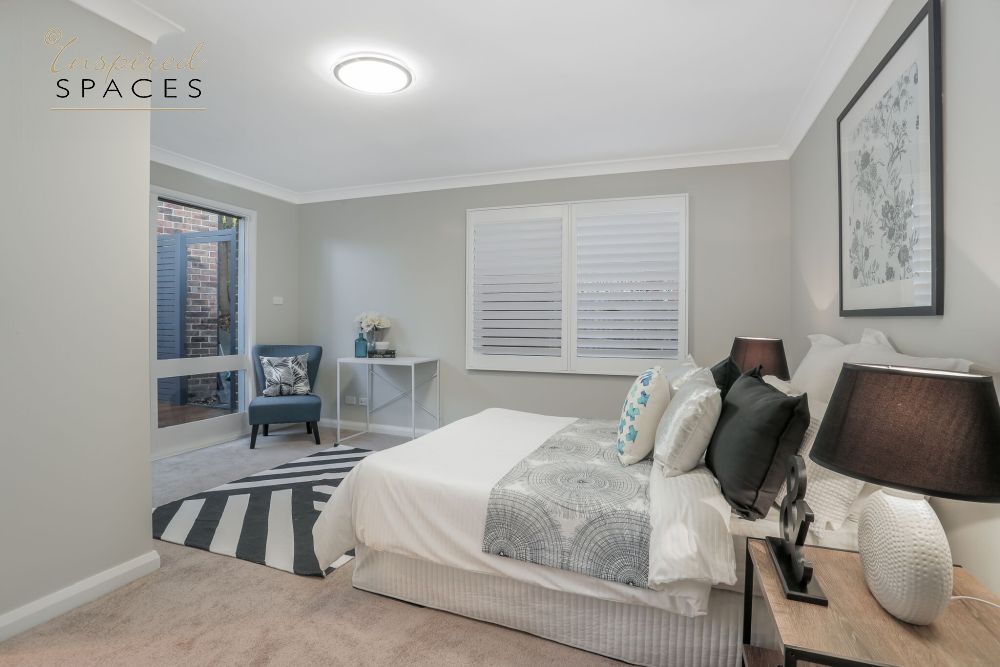Get Inspired
Choosing the right colour for your room can be trickier than you may think. When selecting a new colour for a space it’s good to find something in the room to use as a starting point. For example a patterned rug, cushions or your favourite piece of art. Pick out one or two colours from one of these items, generally choosing the less dominant colours is best.

Patterned rug provides inspiration for feature wall colour
Dark to Light rule
Following the dark to light rule can make decisions easier for you. Generally (but not always) darker colours are on the floor, mid-tone colours on the walls and lighter on the ceiling.
Head to the paint shop
Once you have your colours in mind, at the paint shop select a number of colour cards, to take home, in varying tones and shades of the colours you have chosen.
Never make a decision on your final colour in the shop, as the lighting and other factors will be different to your space at home. Believe it or not, these all contribute to how the colour will actually look.

Purchase sample pots
Once you have narrowed down your choices to 2 or 3 colours, it’s a good idea to purchase sample pots to help you make a final decision. Paint a piece of card (A4 size is good) and place it on the wall for about a week. Every couple of days moving to a different wall or area. This will allow you to see how the colour will look and change throughout the day and in the evening, on sunny days and cloudy days etc. Not forgetting to also check that your colour is working well with furniture and soft furnishings already in the room.
Do not paint sample pots directly onto a wall as you will only create confusion and extra work. If the colours are too close they will influence each other but also you will end up with an uneven coloured wall which will need undercoating prior to the top coats being applied.
Consider the colour theme throughout the rest of your home
Always ensure that any adjoining rooms or hallways are working well together. An easy but interesting way to do this is to build a palette with shades of the same hue. By this I mean, stick to one colour but use darker and lighter shades in different rooms or for accent walls.
Also, consider what the room is going to be used for. For example, a toy room can be bright and full of colour to encourage children to play.
Choosing the correct paint finish
Applying the correct paint finish to your walls is important.
For low traffic areas a Flat finish will give off a richer colour and looks elegant and soft. However, it marks easily and doesn’t clean well, so isn’t good for high traffic areas.
For these areas, an Eggshell or Low Sheen finish is best. The sheen will slightly lighten the appearance of the colour but better protection and longevity will be provided. Most marks can be wiped off low sheen acrylic by using a damp cloth.

In saying that, sheen on the walls can show up any imperfections. So if your walls are abit lumpy and bumpy in parts its best to stick to a less glossy finish with the best durability for your space. In my experience, Eggshell finish is best for this.





Leave A Comment Or Ask A Question